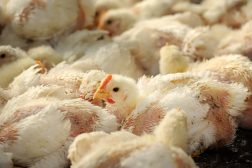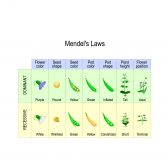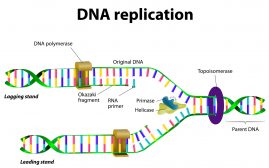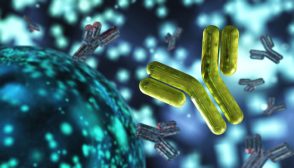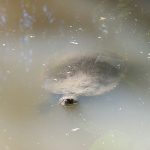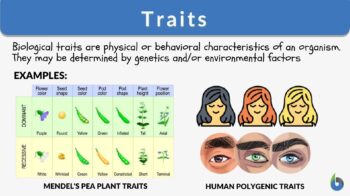
Traits
n., singular: trait
[tɹeɪts]
Definition: characteristics or attributes expressed by genes and/or influenced by the environment
Table of Contents
Traits Definition
“Trait” is a rather well-known word in the English language. What does trait mean?
A trait is defined as a quality of someone or something that is notable. Generally, the definition in English matches that of biology. This then brings up the question, what is a trait in biology? How does biology define “traits”? The trait definition in biology gives is a specific characteristic that an organism can hold or portray.
Traits are characteristics or attributes of an organism that are expressed by genes and/or influenced by the environment. Traits include physical attributes of an organism such as hair color, leaf shape, size, etc., and behavioral characteristics, such as bird nesting. Etymology:from Latin “tractus”. See also: phenotype, inheritance, gene.
Types of Traits
There are many types of traits that an organism can portray. All traits are either genetic traits – which are those based on the genes of an organism – or behavioral traits – which are determined by environmental interaction with genes.
1. Genetic traits
How do genes determine the traits of an organism? The genetic traits are controlled by the genes that one inherits from both parents. Genes define our individual and independent characteristics as encoded by specific segments of our DNA.
These genes code for our genotype, which is the genetic make-up of an organism. Since the genotype determines the phenotype, the phenotypic traits are the physical traits that are displayed by an organism determined by the genetic traits they inherited.
2. Behavioral traits
Behavioral traits are those actions that are observed in organisms throughout their species. This is an observed or environmental trait and is inherited through learning or instinct. However, it must be noted that behavioral traits are a mixture of inherited behaviors based on genetics and learned behaviors from social cues and the immediate environment.

The environment plays a heavy role in how traits will be displayed in the end. Certain traits can appear one way normally – whether behavioral or genetic – but may vary based on the organism’s environment. For some motile organisms such as some animals and humans, these environmental factors can be controlled if they are able to move away from them. For others, on the other hand, this is not an option and they must conform and adapt to these conditions. This can often change the way physical traits are depicted over future generations.
Sometimes traits based on the environment can be very useful to wild and even domestic animals as well as humans. Baby snakes that are born with scale patterns that blend with their environment are less likely to get hunted by predators. This trait, camouflage, is a great environmental trait that can help organisms to survive. Other physical traits such as the beauty and patterns of the feathers on a peacock can make finding a mate easier.
Traits Examples
It is quite easy to see physical trait examples in the average organism. Many living things display and pass down traits to their future generations. For instance, in plants, there are numerous traits that the average person can notice. The leaf shapes, the flower colors, and even the branching patterns of certain trees are all different types of traits that have been passed on genetically that will appear physically.
-
Mendel’s pea plant traits
In Figure 2 below, we see one of the most common examples of physical traits in plants in biology. The Mendel’s Pea Plant traits show the different phenotypes or physical traits a pea plant will obtain based on if its genotype is dominant or recessive. The plants can be tall or short, yellow or green and even axial or terminal all based on the genes they inherited.
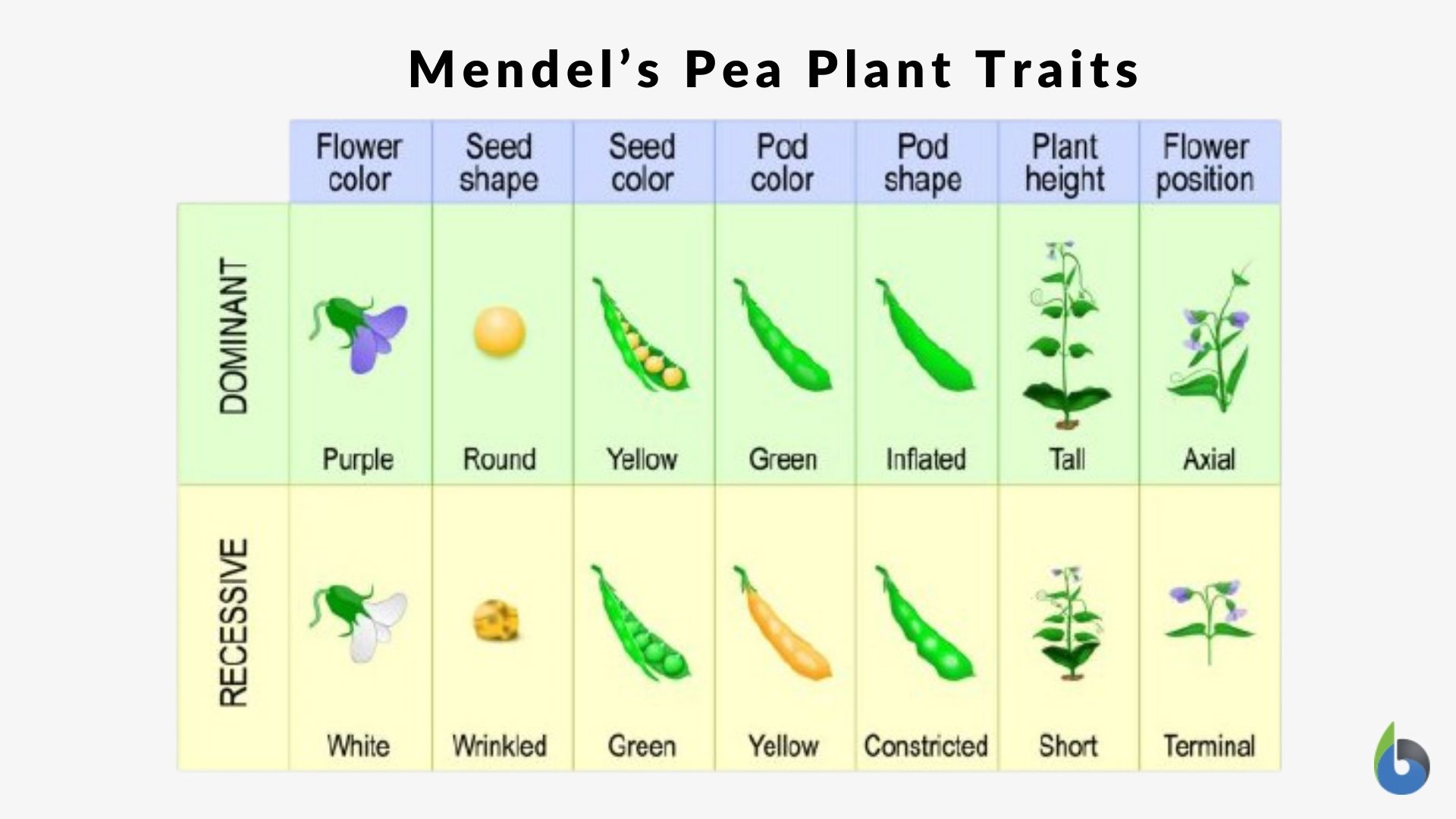
READ: Mendel’s Law & Mendelian Genetics
-
Dog coat traits
Many animals also depict certain physical traits as well. These traits are inherited from the parent generations and passed down to their offspring and other future generations. Parent organisms can produce offspring who have physical traits that vary tremendously from other offspring on the same parent.
Figure 3 below shows us that despite one of the parent dogs having a coat that is darker brown coat than the other parent, all the puppies of the litter physically looked like the other parent, having a lighter color coat.
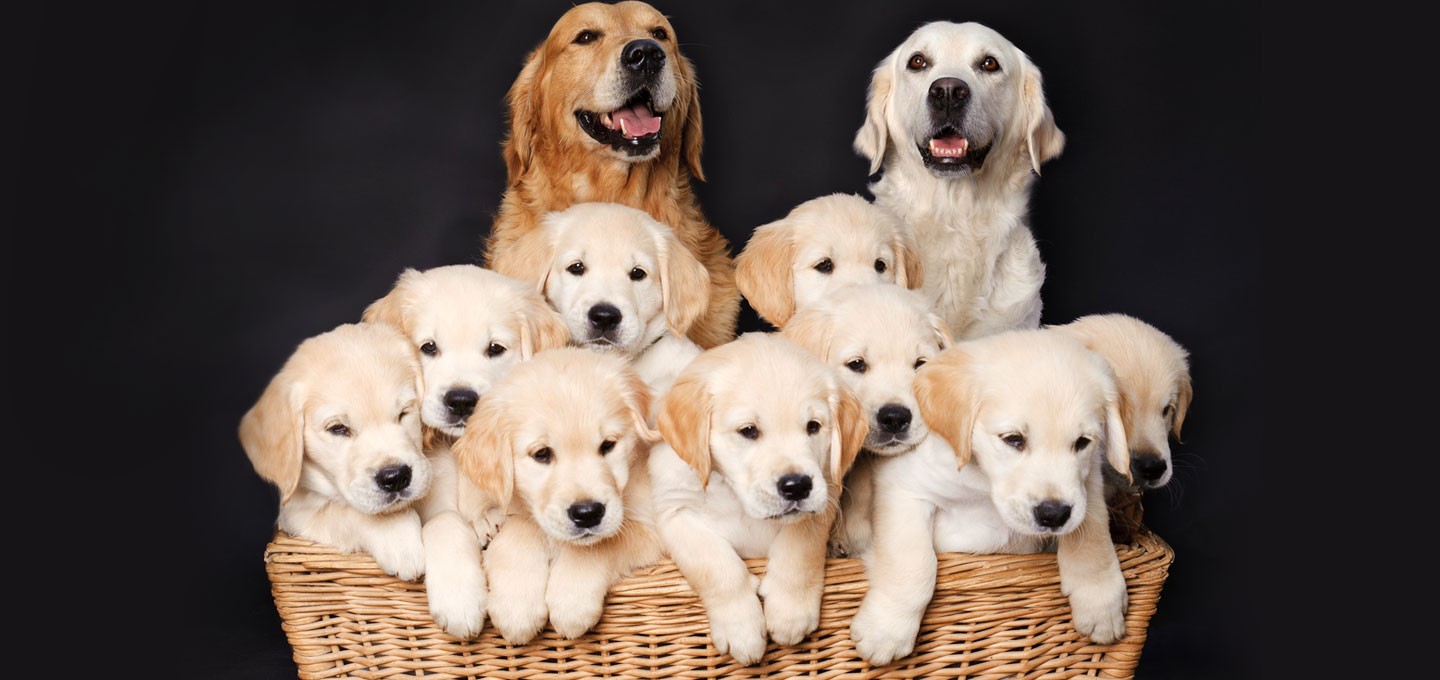
-
Monogenic traits
Other well-known physical genetic traits that humans pass along to their offspring are shown in Figure 4. They are examples of a monogenic trait, which means a trait determined by a single gene.

-
Polygenic traits
Polygenic traits are traits that are controlled by polygenes (multiple non-allelic genes). Examples are height, skin color, hair color, and eye color of humans. The traits are determined not by a single gene but by multiple genes.
-
Behavioral traits
In animals, behavioral traits can range from how animals move to how they protect themselves from different predators and stimuli. Opossums are infamous for playing dead to ward off predators and escape being eaten. This behavior is observed and mimicked by their offspring and has been passed on for generations.
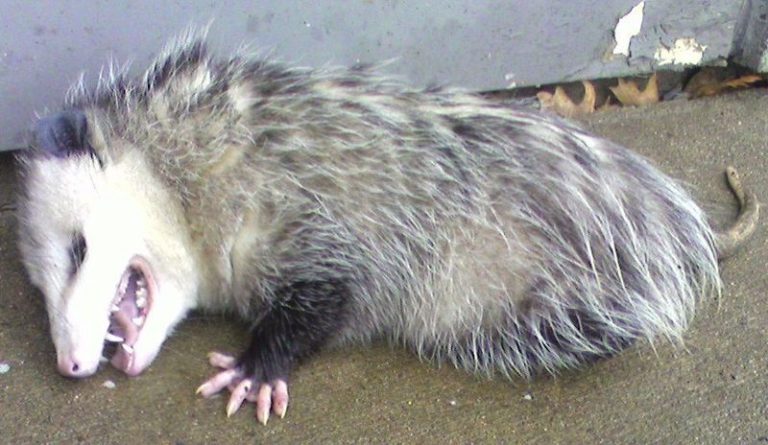
Other animals such as hissing cockroaches use sounds to fool predators into thinking they are more dangerous than they appear to be. These sounds again are learned by their offspring and used throughout generations to come.
Some animals also learn and develop traits due to their habitats. These environmental traits can range from internal changes like hormones and body temperature to external changes like physical attributes. For instance, animals that live in areas where they experience the different seasons will have physical changes as winter comes around. Animals such as the snowshoe hare rely on camouflage to avoid predators. Hence, as the seasons change they change the color of their fur coat – white during the winter and brown during fall and spring – so that they can blend more efficiently with their respective surroundings.
Watch this video to learn more about traits.
Try to answer the quiz below to check what you have learned so far about traits.
References
- Accelerate Learning. 2021. Environmental Traits. Accelerate Learning, http://davis314.weebly.com/uploads/1/0/6/3/106359787/environmental_traits.pdf
- Animal Network Team. 2021. Nine Awesome Defense Animals Use to Avoid Predators. Animal Network. https://animals.net/nine-awesome-defenses-animals-use-to-avoid-predators/
- Generation Genius. 2021. Inherited Traits and Genetics for Kids. Generation Genius. https://www.generationgenius.com/inherited-traits-and-genetics-for-kids/
- Lobo, I. (2008) Environmental influences on gene expression. Nature Education 1(1):39
https://www.nature.com/scitable/topicpage/environmental-influences-on-gene-expression-536/ - National Human Genome Research Institution. 2021. Traits. About Genomics. https://www.genome.gov/genetics-glossary/Trait
- Nature Education. 2014. Genetics. Scitable by Nature Education. https://www.nature.com/scitable/topicpage/each-organism-s-traits-are-inherited-from-6524917/
- PBS. 2021. Environmental effects on Traits. Life Science. https://www.pbslearningmedia.org/subjects/science/life-science/genetics-and-heredity/environmental-effects-on-traits/
- Writer, S. 2020. What is a behavioural trait? Reference. https://www.reference.com/world-view/behavioral-trait-9d7ca58594464c10
©BiologyOnline.com. Content provided and moderated by Biology Online Editors.

